|
Research Abstracts 2000 | |
|
Interpreting the Best Location for an Interstate Highway Truck Safety and Weight Enforcement Facility | |
|
Researcher: Keisha Harrison, SR/CS Mentor: Dr. Timothy Olsen, Univ. of Wisconsin-Madison, ARC | 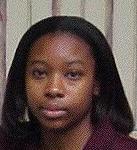 |
| Keisha became a member of the remote sensing commercialization NASA-supported Affiliated Research Center (ARC) project team when she arrived and began to work on visualizations developed from digital elevation models (DEMs) downloaded from the US Geological Survey (USGS), Landsat-7 multispectral data from July of 1999 and county aerial orthophotography . These visualizations were created to be used for planning and decision-making by a engineering firm contracted to the DOT. The goal was to select the best site for a new Safety and Weight Enforcement Facility along a section of Interstate-90. The visualization challenge was to present complex geospatial data meaningful to decision-making in a manner that would enhance engineering decisions and enable meaningful participation by the general public during open hearings. As part of an ARC project, the fly through visualizations contributed towards the commercial viability of remote sensing data and technology. | |
|
| |
|
Researcher: Golar Newby, SO/CS Mentor: Edward Swan II, ONR Naval Research Lab | 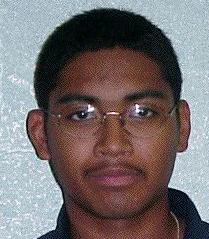 |
| The internship project at the Naval Research Laboratory involved researching the development of 3 Dimensional models from 2 Dimensional pictures. Software packages used include, but are not limited to are Canoma by Meta Creations and Photo Modeler Lite which is developed by EOS Systems Inc. The purpose of this research is to find ways to form accurate 3D models that can be measured for errors and measured for length given a certain scale. The model should then be able to be saved in an Open GL format or VRML formate so that another computer can understand the geometry and texture of the 3 dimensional object. The project also involved study of the most common type of lens distortion encountered, barrel type. Barrel lens distortion causes the image to bend out which causes the image to curve much the same way as a barrel. With the evaluation of Canoma and Photomodeler Lite I was able to determine that Photomodeler Lite was geared much more towards the project and would better benefit someone modeling. With the upcoming release of Photomodeler Pro 4.0 it would better benefit the project. | |
|
| |
|
Researcher: Shayla Brooks, SO/CS Vincent Davis, SO/Physics Mentor: Dr. Donald K. Walter, Center for Network Research & Training at SCSU |
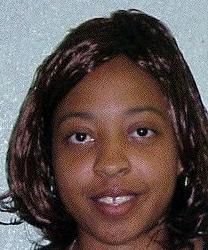 
|
| The growth of dark matter clusters in the early universe is investigated by using a two-dimensional toy model developed by Krauss and Starkman. The model is implemented in the Mathematica software so that the variation of model parameters can be understood visually. Effects investigated include expansion, growth of the horizon, and free-streaming. Because dark matter is thought to be the seeds for the formation of galaxies, the correlation function for a set of model parameters is calculated and compared with that determined from an actual galaxy catalog. The project also included understanding Optical Astronomy, Stars, ASTROIP, UNIX. | |
|
Technique for observation and Location of Greenhouse and Trace Gases. | |
|
Researcher: Torreon Creekmore, SO/CS Mentor: Dr. Thomas Chyba, Research Center for Optical Physics, Hampton University | 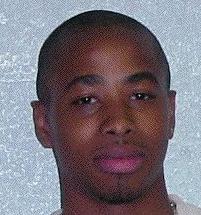 |
| Light Detection and Ranging (LIDAR) is a powerful tool for understanding and studying the Earth's atmosphere. The use of lasers in remote sensing helps scientist to take advantage of the unique attributes of laser light to measure properties of the Earth's atmosphere. LIDAR consists mainly of a laser, telescope receiver, and computer data analysis system. Within this research project experiments were performed to demonstrate the fundamentals of lasers. A newpulse laser was characterized and evaluated for use in a mini-LIDAR system. A small telescope and computer data acquisition system were used to make preliminary measurements. The project started with hard target measurement and proceeded to aerosol measurements. Part of the project involved aligning a plasma tube containing Helium-Neon gas and two resonator mirrors to make a laser. | |
|
| |
|
Researcher: Katrina Banks, SO/CS Issac Lister, SR/Math Mentor: Dr. Donald K. Walter, Center for Network Research & Training (CNRT) at SCSU |
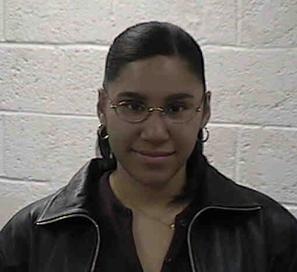 (issac missing) |
| Summer research involved investigation of the spiral galaxy M101. The task included processing and examining images of this object taken from the ground using narrow-band interference filters centered on wavelenghts of several bright nebular emission lines. The study also included examining emission from both high and low ionization ions, O++ and N+ respectively. The presence of HII regions in the arm as well as the ionization structure across the galaxy is discussed. | |
|
| |
|
Researcher: Earnest Walker, SR/CS Mentor: Dr. H. Pendharkar, ECSU Math & Computer Science Dept. | |
| The Long-Term Nearshore Field Experiment is an ongoing project to implement a web-based data-handling system to compile and archive primary data sets from the DUCK94 field research facility. DUCK94 data is the most comprehensive measurement of the dynamic nearshore data ever collected. In alliance with scientist worldwide, it addresses effects of the ocean carbon cycle on the atmosphere-utilizing total of 19 organizations conducts 31 experiments involving 100 scientist, technicians, and students. The focus of the Elizabeth City State University team of the Mathematics and Computer Science Department in partnership with the Coastal Hydraulics Laboratory Field Research Facility was to make the accumulated data available online in useful online formats. Focusing the data of small and medium scale sediment transport, morphology, wave shoaling, wave braking, nearshore circulation and sediment motion accomplished this task. The team's ultimate goal was to transform the data collected from its original state to a format utilizing Perl, Matlab, and HTML. Once the appropriate format was conformed, it was then placed on the JGOFS server for Internet use. | |
|
Using SuperCalc4. | |
|
Researcher: Joseph Gale SR/CS Mentor: Dr. Wayne Higgins, Howard University |  |
| The North American Monsoon System (NAMS) greatly affects climate variability in the continental United States. Finding out exactly how the NAMS affects the climate will allow better prediction of future climate conditions. It is imperative that the NAMS is further researched in order to establish its climate predictability value. Precipitation and surface temperature data has been collected from weather stations all over Mexico for the years of 1990 to 2000. This data will be combined with that of the Southwest U.S., of the same time period, to be analyzed. The raw data was received in .cal and .csv format. The .cal files are converted to .csv files using an application called SuperCalc4. Using another application all of the files were converted to .asc format. A C-program was designed to scan through each file searching for missing values to be replaced and create a new file, which was in a more proper format for analysis. The data was processed using the Cressman Analysis technique. | |
|
| |
|
Researcher: Melvin Lee Mattocks, JR/CS Mentor: Dr. Johnny L. Houston, ECSU Math and Computer Science Dept. |  |
| A system of equations is written in the form a11x1 + a12x2 + a13x3 + a1nxn = b1 a21x1 + a22x2 + a23x3 + a2nxn = b2 . . . . an1x1 + an2x2 + an3x3 + annxn =bn where aij represent the coefficients of the system, bi represents the right-side elements of the systems, and x1, x2, x3,. . ., xn represent the unknowns. To simplify the system we can write it in matrix-vector form. The coefficients aij can be used to form an n x n matrix, where there are n columns and n rows. The unknowns, x1, x2, x3,. . ., xn, along with the right-side elements bi, can be placed in an m x 1 matrix. This system of equations can be rewritten as Ax = b, where A is the matrix of the coefficients, x is the matrix of the unknowns, and b is the matrix of the right-side elements. A solution for this system is a set of specific values for x1, x2, x3, . . .,xn that will make each of the equations a true equality. Systems of equations are solved by many methods. The Gaussian Elimination method is the most well known. This project, investigates the Gaussian Elimination method as well as some specialized methods such as LU (Lower Upper) factorization and Cramer's Rule, as well as some iterative methods such as the Jacobian Method, Gauss-Seidel Method, and the S.O.R. (successive over-relaxation) Method. Computer programs in C++, to solve the equations, were also developed for each of the methods. | |
|
| |
|
Researcher: Je'aime Powell SR/CS Mentor: Simon Julier, ONR Naval Research Lab |  |
| The task involved creation of a working API which will automatically convert files from VRML class files into OpenGL linklists or C code files for implementation into the GRATO. OpenGL is a cross platform graphics rendering package. It is mostly used for ultra realistic landscapes. The GRATO uses OpenGL to display both reality based landscapes and any man made added features. Specific on the GRATO can be found at the AIT web site which is http://www.ait.nrl.navy.mil. The most common OpenGL seen by users can be found in Direct X enhanced games for the PC. It is a very powerful package. The OpenGL website (http://www.opengl.org) served as a reference on the powerful package and implementation of software development. The research continued with a focus on the functions of VRML and its *.wrl class files. One main difference between OpenGL and VRML is the way the textures and object are defined. VRML has shapes built in while OpenGL's linked lists are long an cumbersome sets of instructions. One program was identified with the ability to import wrl files and export c files which can be compiled and run using OpenGL. The program's name is "3D Explorer" by Xdsoft. | |
|
| |
|
Researcher: Katrina Godwin, GRAD/CS Mentor: Joann Ordille, Lucient Technologies- Bell Labs |  |
| The research project focused on wireless technology and the construction of an e-mail notification program in the C programming language for UNIX that could be used for wireless application. Circular buffers were investigated as well as Bluetooth wireless technology. A circular buffer program was written to prepare for the e-mail notification program. The e-mail notification program was designed to perform a search for a keyword in the Associated Press newsfeed. Once the keyword was found in an article, an e-mail notification with the title of the article was sent to a specific e-mail address. The program used the UNIX Mail command and the system() function. Katrina is now a graduate student at Howard University. | |
|
| |